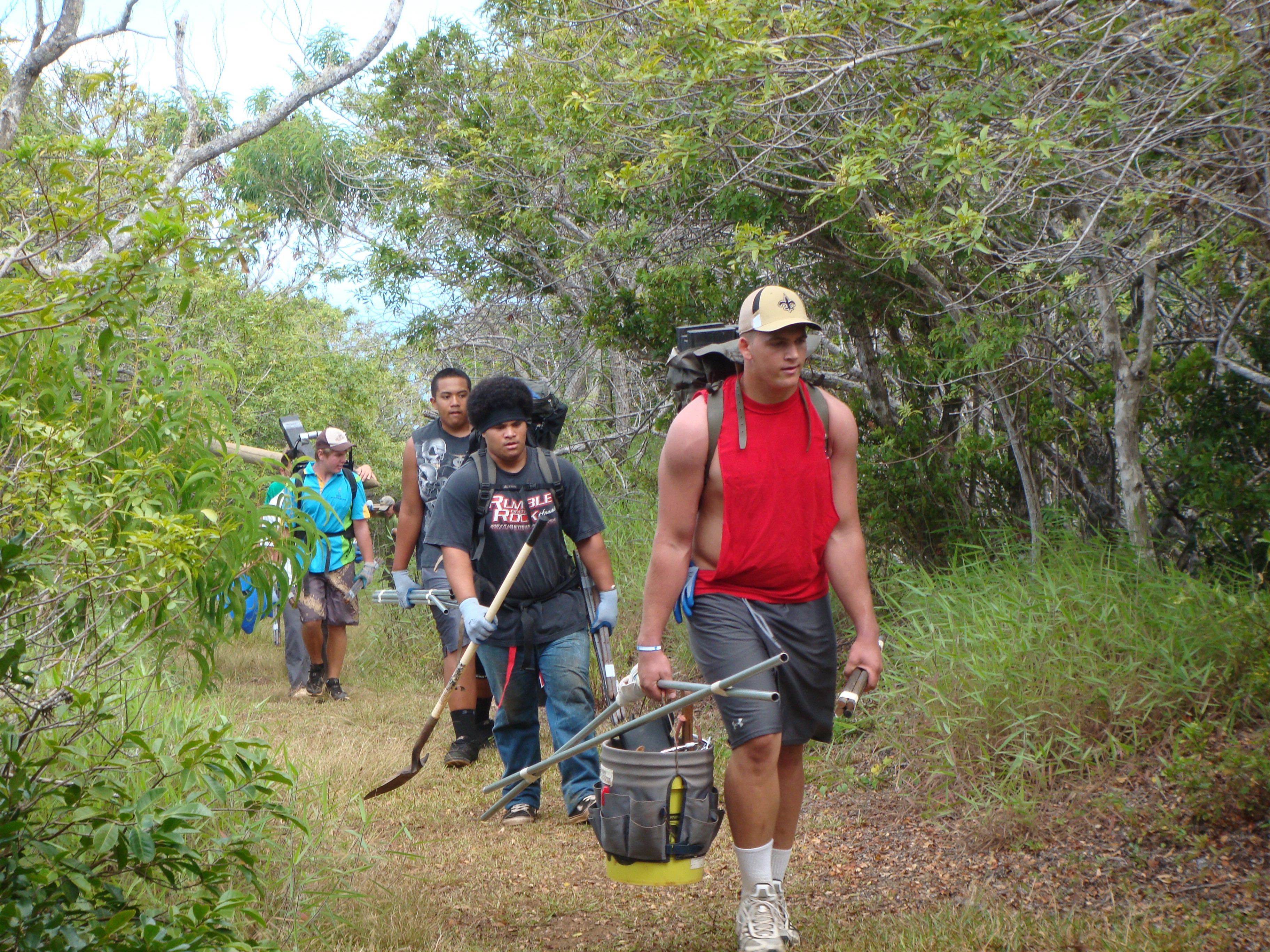KAHANAHAIKI, Hawaii - Volunteers and Army staff became one with nature, in the Waianae Mountains, in support of National Public Lands Day, Sept. 26.
Oahu Army Natural Resources Program (OANRP) staff and community volunteers came together, here, to set up the first phase of a field nursery designed to support the growth of Acacia Koa seedlings, in a forested gulch along the northwestern ridge of Makua Valley.
Koa trees are important, not only because they are native to the Kahanahaiki forest, but also because the Koa provides a home to many native Hawaiian forest birds and insect species.
Koa is also an important food source for the Kamehameha and the Koa butterflies, Hawaii's only native butterflies.
This project is a key part of a broader plan to re-populate one of the last areas of native mesic forest on Oahu. Field nurseries established on the outskirts of existing forest or adjacent to restoration sites can provide favorable conditions for the growth and spread of native plants.
"Currently, the ecosystem is dominated by introduced species of plants and trees," said Kapua Kawelo, OANRP biologist, U.S. Army Garrison-Hawaii Directorate of Public Works. "In order to make it a viable habitat for native plants and animals, we need to take an active role in restoring the native species to the area. The field nursery is a big step toward tipping the balance in favor of native species."
The benefits of a field nursery are plentiful: Nursery plants are exposed to the same climate and insects as the restoration site, where they will eventually be replanted; the travel cost of relocating plants is limited or eliminated all together; and there is far less risk of bringing in new insect pests or pathogens to restoration areas.
The overall forest restoration project will help extend the valuable forest habitat of Kahanahaiki, which is currently home to at least seven endangered plant species and an endangered tree snail.
Kahanahaiki is also a historically known habitat of the Oahu elepaio, a native fly catcher and one of Hawaii's endangered birds.A|'A'


Social Sharing